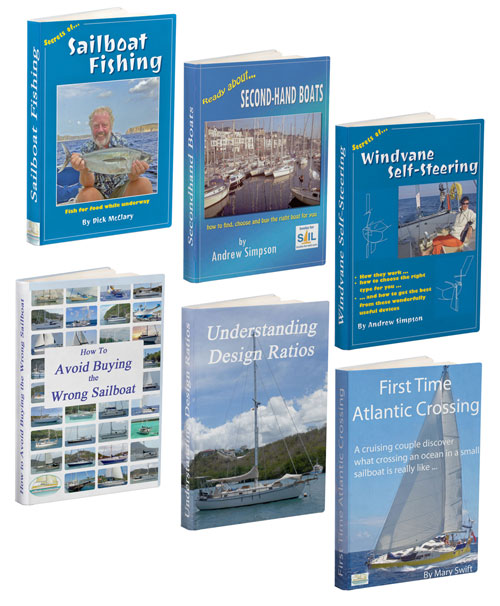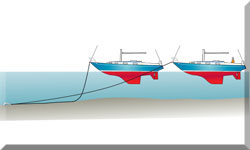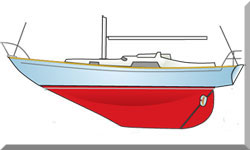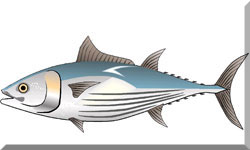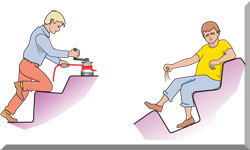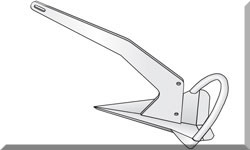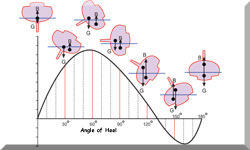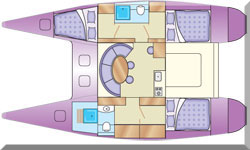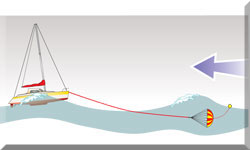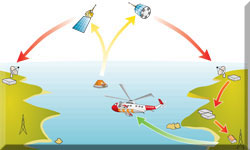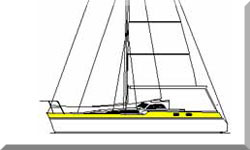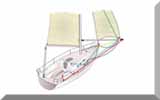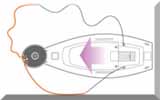- Home
- Cruising Sailboats
- Performance Cruising
The Performance Cruiser: Balancing Speed, Safety & Autonomy
In a Nutshell...
A performance cruising yacht demands a combination of robust equipment, lightweight construction, and sophisticated electronic systems. Speed is intrinsically linked to safety; the ability to make fast passages, outrun weather, and handle high loads efficiently relies on investing in a high-quality rig, resilient power management (ideally Lithium), and an intelligent autopilot capable of steering to true wind. Ultimately, the performance cruiser is defined by its ability to deliver an exhilarating sailing experience without compromising the self-sufficiency required for true ocean voyages.
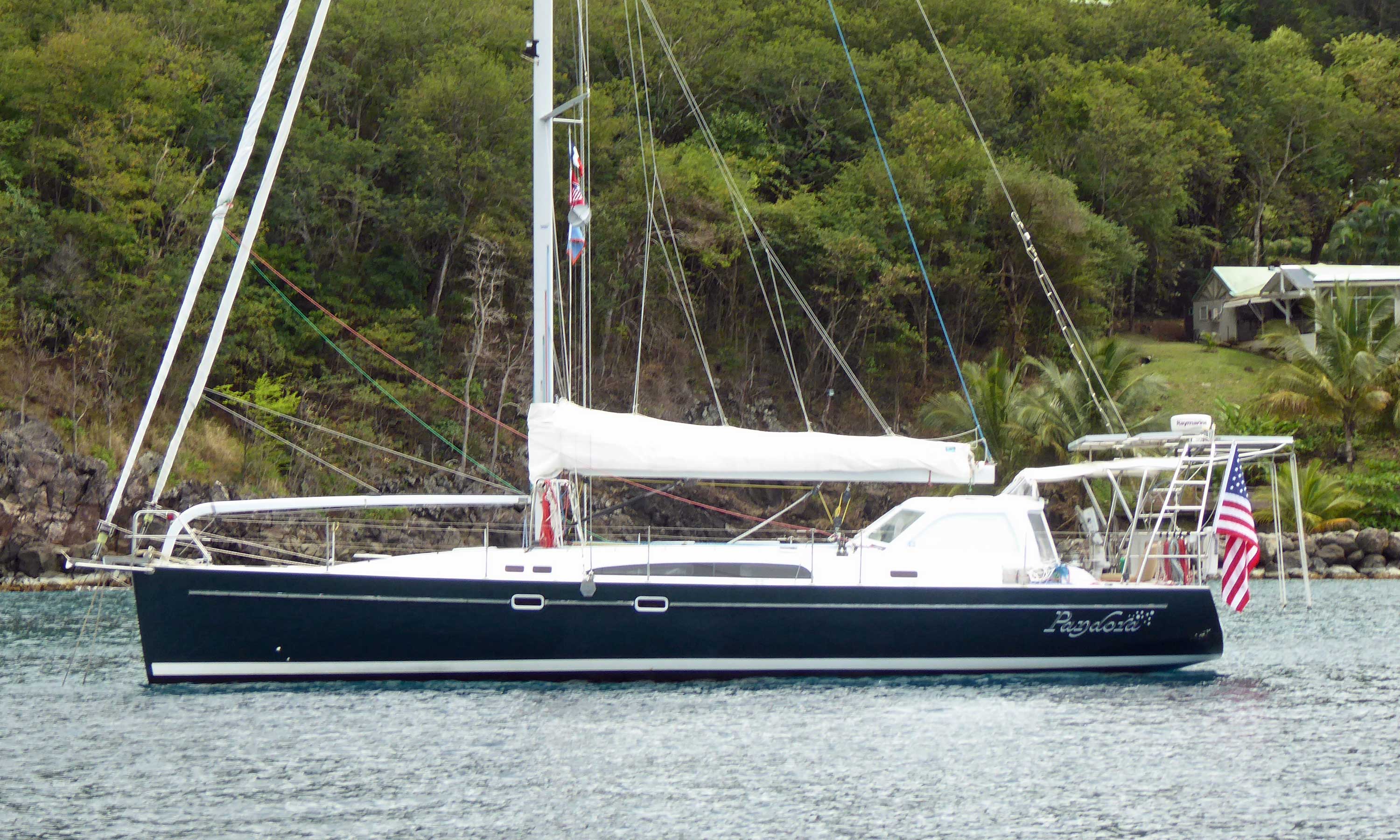 There's no mistaking that this Aerodyne 47 is designed as a light-displacement performance cruising boat.
There's no mistaking that this Aerodyne 47 is designed as a light-displacement performance cruising boat.Table of Contents
- Sail Inventory & Rigging for Speed & Durability
- Dedicated Sail Trim & Deck Hardware
- Power Management: Balancing Performance & Autonomy
- Autopilots & Self-Steering: Holding a Course at Speed
- Advanced Navigation & Weather Routing
- Tactical Heavy Weather & Storm Management
- Optimising Watch Systems & Performance Crew Skills
- Frequently Asked Questions (FAQs)
For the experienced ocean sailor, the concept of a performance cruiser represents the ultimate sweet spot: a yacht capable of delivering exhilarating speed and excellent pointing ability, yet equipped to handle sustained offshore passages in comfort and safety. It's a boat designed not just to cross oceans, but to do so quickly and efficiently.
This guide moves beyond the basics to focus on the essential gear, systems, and crew skills required to successfully command a high-speed vessel on long-distance voyages.
Sail Inventory & Rigging for Speed & Durability
The sails are, quite literally, the engine of a performance cruiser. Your inventory must strike a delicate balance between light-air power and heavy-weather robustness. Durability and shape-holding are paramount; speed quickly becomes irrelevant if a sail shreds 1,000 miles from the nearest port.
The Working Sail Locker
Performance cruisers generally favour non-overlapping headsails (jibs) paired with a powerful mainsail, often featuring a large square-top design. This setup proves efficient for upwind sailing and dramatically cuts down on the effort needed for short-handed tacking.
| Sail Type | Primary Use & Material | Performance Feature |
|---|---|---|
| Mainsail | Primary drive. Full-battened, often with a large roach. Modern 3Di or similar high-modulus cloth for shape retention. | Requires a low-friction mast track system for fast, reliable reefing and hoisting. Three reef points are non-negotiable. |
| Jib (95%-105%) | The workhorse upwind sail. Heavy-duty construction, typically on a furler. | Higher-aspect ratio (taller and narrower) for pointing ability. Must hold an efficient shape even when slightly reefed. |
| Staysail (Heavy Weather) | Set on a dedicated Solent stay. Used with the reefed main in high winds (25+ knots). | Critically improves boat balance and reduces mast pumping in rough seas; far superior to trying to deeply reef a large jib alone. |
Downwind & Reaching Inventory
Downwind efficiency is where you truly bank on passage times. Modern performance cruising relies heavily on furling reaching sails to keep handling manageable with a small crew.
- Code Zero: A flat-cut sail, set on a top-down furler, ideal for light airs and tighter reaching angles (40 degrees to 90 degrees apparent wind). This is essentially the "light-air genoa" of the modern yacht.
- Asymmetrical Spinnaker: A more powerful, deeper sail for broad reaching and running (90 degrees to 150 degrees apparent wind). Best managed with a snuffer (sock) or a large furler for safe, simple deployment and retrieval.
Optimising the Standing Rigging
For a fast boat that is constantly under high load, the standing rigging demands annual, rigorous inspection. Many performance yachts specify rod rigging or, increasingly, composite fibre rigging (like carbon or PBO) for its lighter weight, which is key to reducing weight aloft and improving stability and motion.
These performance considerations are an essential component of comprehensive yacht preparation. For a wider view of all aspects of ocean voyaging, including deep-sea storm tactics and realistic provisioning, consult our reference: The Ultimate Blue Water Sailing Guide: Preparation & Seamanship for the Ocean.
Dedicated Sail Trim & Deck Hardware
A performance cruiser is only as fast as its crew’s ability to trim and depower quickly. Investing in the right systems is necessary to convert raw power into speed without relying on an army of rail meat.
Hydraulic & Ram Systems
Instantaneous, high-tension control is vital for both performance and safety, particularly when a sudden squall hits.
- Hydraulic Backstay Adjusters: Used to quickly tension the forestay, flattening the jib/genoa and depowering the main immediately in a gust. They provide essential mainsail shape control on high-performance rigs.
- Hydraulic Vangs & Out-haul: Used to precisely control boom height and mainsail foot tension. These systems allow the crew to lock in a perfect sail shape and efficiently manage twist.
Powered Winches for Safety
While some see them as a luxury, electric winches are practically a safety and performance requirement for short-handed sailing. They empower one person to safely sheet in a large asymmetric or haul in a third reef in a blow, preventing potential injury and enabling faster, more reliable reactions to shifting conditions.
The Jib Car & In-Hauler System
Performance yachts require granular tuning of the headsail's shape. Adjustable jib-car systems (often on deck tracks) and in-haulers (lines that pull the sheet lead inboard) are used to manipulate the headsail's twist and angle of attack. This is essential for maximizing Velocity Made Good (VMG) when pointing upwind, allowing you to keep the sail driving close to the mast while easing the leech.
Power Management: Balancing Performance & Autonomy
For a performance cruiser, the electrical system is a critical resource. A fast boat needs a system that is lightweight and can reliably support high-draw equipment—especially an aggressive autopilot and a complete electronics suite—without compromising the yacht’s speed potential.
High-Efficiency Generation at Sea
Out on the ocean, you need to generate sufficient power without hurting boat speed or racking up excessive engine hours.
| Generation Source | Performance Benefit | Trade-Off |
|---|---|---|
| Hydro-Generation | Passive power generation with minimal drag penalty at speeds above 6 knots. Silent and highly efficient for long passages. | High initial cost; requires removal in marinas or while drifting to prevent fouling. |
| High-Output Alternators | Fast charging when the engine is running (e.g., during transit or in light winds). Essential for rapid battery recovery. | Requires a smart, multi-stage external regulator to protect batteries and engine. Can put strain on the engine belt. |
| Solar Panels | Silent, continuous trickle charging. Modern flexible panels can be lightweight and integrated into biminis or decks. | Lower output than hydro-generators. Placement can add windage or require complex installations. |
The Lithium & Weight Trade-Off
The move to lithium iron phosphate (LiFePO4) batteries is a game-changer. They offer up to 80-90% usable capacity and are significantly lighter than lead-acid types. This weight reduction is crucial for performance and trim. However, they demand a sophisticated Battery Management System (BMS) to prevent over-charging or over-discharging and require careful professional integration.
Autopilots & Self-Steering: Holding a Course at Speed
An offshore performance yacht spends the vast majority of its time under the control of an autopilot or self-steering gear. The wrong system will fight the boat, waste power, and slow you down. The right one will steer better and more tirelessly than any human helmsman.
The Superiority of Below-Deck Drives
For any serious offshore passage, a below-deck autopilot with a powerful linear or rotary drive is mandatory. Cockpit-mounted systems simply lack the necessary torque and durability for sustained heavy weather work.
| Component | Function for Performance Steering | Key Consideration |
|---|---|---|
| Course Computer | The 'brains' that analyses data from the compass, rudder reference, and GPS. | Look for an advanced model with adaptive learning to 'tune' itself to your specific yacht. |
| Attitude Heading Reference System (AHRS) | A solid-state sensor, often a rate gyro, that measures movement on three axes (pitch, roll, yaw). | Critically important for performance; allows the pilot to anticipate boat movement and apply rudder smoothly. |
| Linear Drive Unit | Connects directly to the rudder quadrant, applying the necessary force. | Must be correctly sized to your boat's maximum rudder torque. Oversize slightly for better performance and reserve power. |
Integrating with True Wind
For maximum performance, your autopilot must be linked to a fast, accurate wind sensor (e.g., via NMEA 2000). High-end sailing autopilots can steer to a specific apparent wind angle rather than a compass course. This capability is essential for fast passage-making, as it automatically compensates for wind shifts to keep your sails trimmed for optimal speed.
Advanced Navigation & Weather Routing
Navigation on a performance cruiser is a continuous tactical exercise reliant on high-speed data. The goal is not merely to track your position, but to perpetually calculate the fastest, safest route based on the latest forecast.
High-Speed Satcom & Data Consumption
Modern high-speed satellite connectivity has transformed offshore weather routing.
- Data Requirement: Performance routing software requires high-resolution GRIB files and may run cloud-based calculations that demand significant bandwidth.
- High-Speed Solutions: Systems like Starlink Maritime or Iridium Certus provide the speed necessary for real-time, high-resolution data download, allowing the crew to make tactical course adjustments based on the most current information available.
- Redundancy: Even with advanced Satcom, carrying a completely separate Single Sideband (SSB) radio is essential for receiving weather fax (analog charts) as a low-power, independent backup.
Tactical Display Setup
Your electronics suite must present data that is actionable for performance. This demands dedicated, networked displays.
- Actionable Data: Cockpit MFDs (Multiple-Fuction Displays) should be configured to show VMG (Velocity Made Good), polar targets (the yacht's theoretical maximum speed for given conditions), and laylines (the furthest point upwind you can reach on the current tack).
- Networking: An integrated NMEA 2000 backbone is non-negotiable, ensuring all sensors (GPS, wind, speed, gyro) feed consistently into the autopilot and course computer.
Tactical Heavy Weather & Storm Management
A performance yacht’s heavy weather strategy is built upon its ability to maintain control and speed to outmanoeuvre dangerous conditions. Relying solely on passive survival is for traditional boats.
Active Broach Prevention
Performance yachts with fine entries and high-aspect rudders are, by their nature, susceptible to broaching when running in a large following sea.
- Controlling the Stern: The most important tool for active control is a heavy warp or a series drogue deployed off the stern, even before the conditions become severe. This creates drag that stabilizes the stern, improves rudder authority, and prevents the boat from surfing uncontrollably and pitch-poling.
- Sail Configuration: When running downwind in a gale, keep the sail plan balanced and minimal. Use a tiny mainsail (third reef) and perhaps a small, high-clewed jib to maintain a slight forward bias, keeping the bow up and the rudder engaged.
Upwind Performance in a Gale
When beating upwind in high wind and sea states, maintaining an optimal heel angle is crucial for the keel's efficiency.
- Optimal Heel: Use the third reef in the main and the Solent stay to maintain a consistent heel of approximately 20 degrees to 25 degrees. Too much canvas leads to excessive heel, which forces the keel to work inefficiently sideways (increasing leeway) and dangerously stresses the rig.
- Securing Foils: If the yacht is equipped with high-lift foils like canting keels or daggerboards, they must be secured in their safest position according to the manufacturer's heavy weather procedures to prevent damage from violent impacts.
Optimising Watch Systems & Performance Crew Skills
A performance cruising yacht asks more of its crew. Watchkeeping is not just about keeping a lookout; it is about maintaining a high average velocity, especially in changeable conditions, while ensuring the crew is rested enough to respond instantly to emergencies.
The Four Pillars of Performance Watchkeeping
- Safety & Lookout: Non-negotiable. Maintain a vigilant lookout, especially for fishing vessels, debris, and changing weather systems. Use AIS and radar actively, not passively.
- Performance Maintenance: The watch crew is responsible for keeping the boat moving. This means actively monitoring boat speed, sail trim, and course. When an apparent wind shift occurs, a performance watch system adjusts the sails immediately, rather than waiting for the change of watch.
- Rest & Nutrition: A rested crew is a fast crew. A common performance cruising system is the 4-hour rotation, as it allows for longer, more meaningful off-watch periods, thus avoiding the fatigue that cripples efficiency.
- Weather Analysis: The watch should be trained to interpret the latest GRIB files and update the routing software, allowing the skipper to make informed tactical decisions immediately upon being called.
Key Skills for the Performance Crew
Every crew member should be proficient in high-stress, high-load manoeuvres:
- Fast Reefing: Knowing your sail inventory's reefing points and being able to execute a clean reef without losing significant boat speed is critical.
- Emergency Communications: Every crew member must know the location of the Grab Bag, how to send a DSC distress call on the VHF, and how to activate the EPIRB or PLB.
- Preventative Maintenance: A daily equipment check, particularly of the standing rigging, running rigging chafe, and rudder bearings, is essential to prevent equipment failure when pushing the boat hard.
This article was written by Dick McClary, RYA Yachtmaster and author of the RYA publications 'Offshore Sailing' and 'Fishing Afloat', member of The Yachting Journalists Association (YJA), and erstwhile member of the Ocean Cruising Club (OCC).
Frequently Asked Questions (FAQs)
1. What is the biggest challenge in managing power on a performance cruiser?
1. What is the biggest challenge in managing power on a performance cruiser?
The main challenge is balancing the high power demands of sophisticated electronics (especially the autopilot) with the need to minimise drag and weight from charging systems. This is why hydro-generation and high-output alternators, paired with lightweight lithium batteries, are often the preferred solution.
2. Should I choose a below-deck autopilot or a wind-vane steering system?
2. Should I choose a below-deck autopilot or a wind-vane steering system?
For pure performance and tactical advantage, a powerful, below-deck autopilot integrated with an AHRS and wind instruments is superior. It allows steering to apparent wind angle, which is essential for maintaining optimal boat speed. Wind-vane systems are excellent for power-free redundancy but lack the sophisticated control required for aggressive tactical sailing.
3. What is the minimum sail inventory for safe, fast offshore cruising?
3. What is the minimum sail inventory for safe, fast offshore cruising?
A minimum inventory should include: a durable mainsail with at least three reef points, a versatile roller-furling working jib/genoa, a heavy-weather staysail set on a dedicated inner stay (Solent stay), and a light-air reaching sail, such as a furling Code Zero or asymmetrical spinnaker.
4. Why is the four-hour watch system recommended over others for performance cruising?
4. Why is the four-hour watch system recommended over others for performance cruising?
The four-hour rotation offers a balance between maintaining continuous performance checks on deck and allowing the off-watch crew enough time to achieve meaningful, restorative sleep. This directly combats fatigue, which is the single biggest threat to safety and efficiency on any long passage.
5. How important is weight management for a performance cruiser?
5. How important is weight management for a performance cruiser?
Weight management is critically important. Performance yachts rely on light displacement for speed and high stability for safety. Any unnecessary weight, particularly if it is high up or far forward (like excess chain or heavy deck gear), significantly affects the boat's motion, roll, and speed potential, especially in a seaway.
Resources Used
Long Range Communications - Blue Water Sailing
Satellite communication at sea: staying connected from your boat - PBO
Heavy Weather Tactics - Astrolabe Sailing
Recent Articles
-
Hans Christian 43: Classic Bluewater Cruiser & Liveaboard Sailboat
Dec 10, 25 04:37 AM
Explore the Hans Christian 43: a legendary heavy-displacement, long-keel sailboat. Read our in-depth review of its specs, design ratios, and suitability for offshore cruising and living aboard. -
Planning Your Sailboat Liveaboard Lifestyle: An Ocean Sailor's Guide
Dec 06, 25 05:18 AM
Seasoned sailors share their methodical risk analysis for planning a secure Sailboat Liveaboard Lifestyle, covering financial, property, and relationship risks. -
Marine Cabin Heaters: The Expert’s Guide to Comfort & Safety at Sea
Dec 05, 25 06:52 AM
Choose the best Marine Cabin Heaters for your vessel. Expert advice on diesel, paraffin, and hot water systems for year-round cruising comfort.
